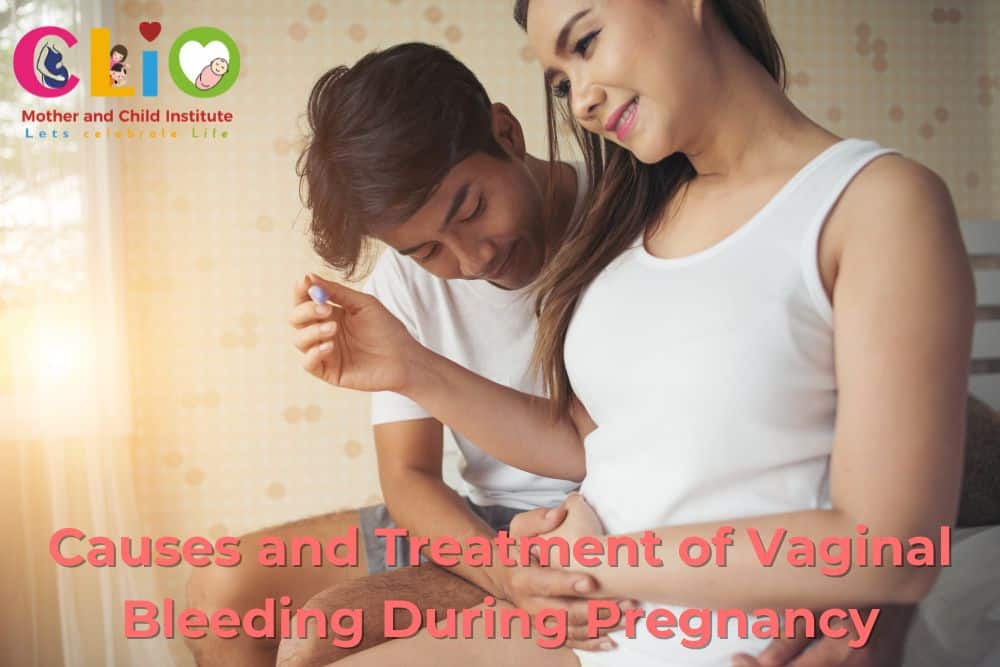Pregnancy is a time filled with joy and impatience, but it can also provide unforeseen problems. One such concern that many expectant mothers face is vaginal bleeding. While not all instances of vaginal bleeding are serious, they can cause worry. Understanding the potential causes and appropriate treatments is essential for maintaining both maternal and fetal health.
In this blog, we’ll delve into the common causes of vaginal bleeding during pregnancy, discuss when to seek medical attention, and outline the treatment options available.
Understanding Vaginal Bleeding During Pregnancy
Vaginal bleeding refers to any blood loss from the vagina during pregnancy, ranging from light spotting to heavier flow. It can occur at different stages of pregnancy and might be associated with various causes, from harmless conditions to more serious medical issues.
Causes of Vaginal Bleeding During Pregnancy
The causes of vaginal bleeding can vary depending on the trimester. Let’s explore them trimester-wise for better clarity.
1. First Trimester Causes
Bleeding in the first trimester (up to 12 weeks) is relatively common and may affect up to 20% of pregnant women. Some potential causes include:
a. Implantation Bleeding
- What It Is: Occurs when the fertilized egg attaches to the uterine lining.
- Symptoms: Light spotting, typically pink or brown, lasting a few days.
- Risk Level: Normal and not a cause for concern.
b. Miscarriage
- What It Is: Loss of pregnancy before the 20th week.
- Symptoms: Heavy bleeding, cramping, and passage of tissue.
- Risk Level: Requires immediate medical attention.
c. Ectopic Pregnancy
- What It Is: The fertilized egg implants outside the uterus, often in a fallopian tube.
- Symptoms: Sharp pelvic pain, dizziness, and bleeding.
- Risk Level: Life-threatening and needs emergency care.
d. Cervical Changes
- What It Is: Increased blood flow to the cervix may cause light bleeding after intercourse or a pelvic exam.
- Symptoms: Spotting without pain.
- Risk Level: Harmless.
e. Molar Pregnancy
- What It Is: A rare condition where abnormal tissue grows instead of a fetus.
- Symptoms: Dark brown or bright red bleeding, severe nausea, and rapid uterine growth.
- Risk Level: Needs prompt treatment.
2. Second and Third Trimester Causes
Bleeding in the second and third trimesters is less common but can be more serious. Some causes include:
a. Placenta Previa
- What It Is: The placenta slightly or completely surrounds the cervix.
- Symptoms: Painless, bright red bleeding.
- Risk Level: Requires close monitoring and possibly early delivery.
b. Placental Abruption
- What It Is: The placenta separates from the uterine wall prematurely.
- Symptoms: Heavy bleeding, abdominal pain, and contractions.
- Risk Level: Life-threatening for both mother and baby, needs immediate intervention.
c. Preterm Labor
- What It Is: Labor that begins before 37 weeks of pregnancy.
- Symptoms: Bleeding with contractions, pelvic pressure, or back pain.
- Risk Level: Requires hospitalization and possible labor management.
d. Uterine Rupture
- What It Is: A tear in the uterine wall, usually during labor.
- Symptoms: Severe pain, heavy bleeding, and fetal distress.
- Risk Level: Requires emergency surgery.
e. Cervical Insufficiency
- What It Is: The cervix weakens and opens prematurely, leading to bleeding and risk of preterm birth.
- Symptoms: Minimal bleeding or spotting, pressure in the pelvis.
Risk Level: Needs medical intervention.
When to Seek Medical Attention
Not all vaginal bleeding requires urgent care, but knowing when to call your doctor is critical.
Contact your healthcare provider if you experience:
- Extreme bleeding (more than one period).
- Accompanying symptoms like severe pain, dizziness, or fever.
- Clot or tissue passage.
- Bleeding after trauma or an accident.
In emergency cases like ectopic pregnancy, placental abruption, or uterine rupture, dial emergency services immediately.
Diagnosing the Cause of Vaginal Bleeding
To determine the cause of vaginal bleeding, your doctor may perform:
- Physical Exam: Includes a pelvic examination to check for cervical changes or visible causes of bleeding.
- Ultrasound: Determines the location of the pregnancy and examines the placenta.
- Blood Tests: Measures hCG levels and checks for anemia or infections.
- Speculum Exam: Identifies any injuries or lesions in the vaginal area.
Treatment Options for Vaginal Bleeding
Treatment for vaginal bleeding depends on the cause, the severity of the bleeding, and the stage of pregnancy.
1. For First Trimester Bleeding
- Implantation Bleeding: No treatment needed; monitor symptoms.
- Miscarriage: Options may include expectant management, medication, or a surgical procedure like dilation and curettage (D&C).
- Ectopic Pregnancy: Requires medication (methotrexate) or surgery.
2. For Second and Third Trimester Bleeding
- Placenta Previa: Bed rest, avoiding strenuous activities, and potential C-section delivery.
- Placental Abruption: Hospitalization, blood transfusion, and emergency delivery.
- Preterm Labor: Medications to delay labor and steroids for fetal lung development.
Preventing Vaginal Bleeding During Pregnancy
While not all causes of vaginal bleeding can be prevented, certain measures can reduce risks:
- Regular Prenatal Care: Early detection and management of potential complications.
- Avoid Smoking and Alcohol: Reduces risks of placental issues.
- Practice Safe Physical Activity: Avoid high-impact exercises or heavy lifting.
- Monitor Chronic Conditions: Manage hypertension, diabetes, and infections promptly.
Emotional Support and Coping
Experiencing vaginal bleeding can be emotionally taxing. To cope:
- Communicate Openly: Share concerns with your healthcare provider and partner.
- Seek Counseling: Talking to a mental health professional can alleviate anxiety.
- Join Supporting Groups: Connect with people who have had similar issues.
Conclusion
Vaginal bleeding during pregnancy is not uncommon, but understanding its potential causes and treatments can help you navigate this concern with confidence. Always prioritize your health and never hesitate to reach out to your healthcare provider if you notice any signs of bleeding.
Remember, timely intervention and proper care are key to ensuring a safe and healthy pregnancy for both you and your baby. Stay informed, stay proactive, and take comfort in the support of your medical team.


